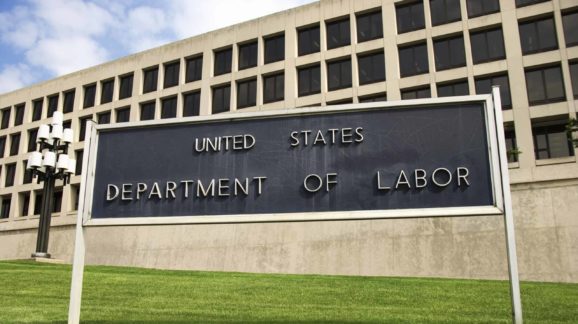Department of Labor’s Radical New Concept: Innocent until Proven Guilty

Photo Credit: Getty
The Labor Department has an interesting new idea: only publicly shame companies when it is clear that they have made serious violations of the law. It has ruffled the feathers of a few veterans of the prior administration who think the principle of “innocent until proven guilty” should not apply to businesses.
Until recently, the department’s various enforcement branches, like the Occupational Health and Safety Administration or Wage and Hour Division, would issue a press release whenever they issued a citation. Deputy Secretary of Labor Patrick Pizzella told department heads in a memo last month that should no longer be their default policy. He noted that citations can be contested and rejected by courts. The press releases therefore “can prove misleading” and that isn’t fair to the accused.
“As a matter of Department policy, in general, enforcement agencies should not issue news releases before achieving a successful outcome. Absent extraordinary circumstances, pursuant to which an agency head may seek an exception to the policy outlined below, an agency’s own finding alone generally should not be the basis for the release,” Pizzella stated.
It seems sensible enough: Only shame those who are actually guilty. But, to many, it is a bad idea. To get effective enforcement, they argue, you have to make company executives constantly worried about getting bad PR from the government.
“OSHA is a tiny agency, and if it doesn’t amplify the impact of its inspections it will have very little effect on almost every workplace in the United States,” David Michaels, OSHA director under President Obama, told The New York Times. “The basis of every inspection is to increase deterrence.”
M. Patricia Smith, a top Labor Department lawyer under the Obama administration, explained that the press releases themselves are “good compliance tools” precisely because they stir up attention. “You want the general public, the regulated public, to know what you’re doing.” Press releases can always be updated later, she argued.
True, but by that point the initial version will have been cut and pasted and spread around the Web. Even professional news organizations almost never revisit the initial version after publication and provide updates. So, for the most part the damage is done. “Employers spend decades and resources, often in the millions of dollars, to ensure their good name, and they treat their customers well, and they believe they treat employees well,” Arthur G. Sapper, a management-side lawyer at Ogletree Deakins, told the Times. “But with one press release issued by a prosecution-minded agency without any review by an impartial observer, all that can be destroyed. And it stays destroyed even if the employer is later vindicated.”
It is also worth noting that Pizzella’s memo is not reversing a longstanding policy, but a recent one. The practice of issuing releases every time a department agency initiates a significant proceeding began with the Obama administration. Restoring the same standard used during the Clinton administration isn’t exactly going back to the Dark Ages.